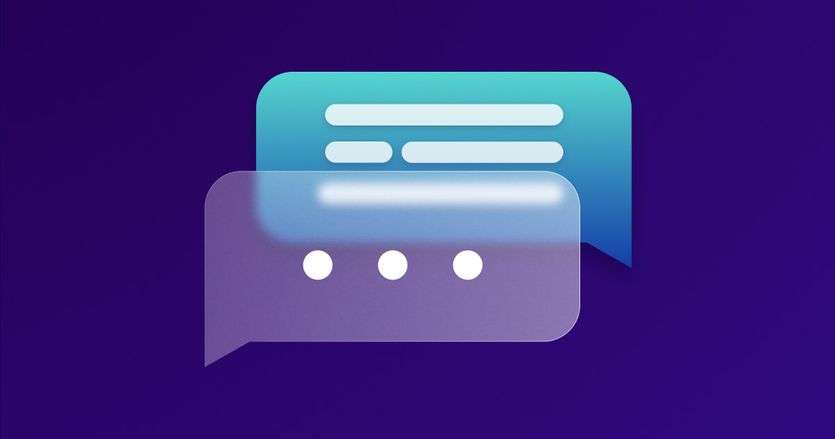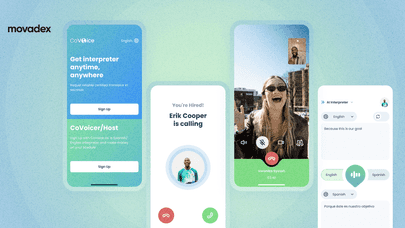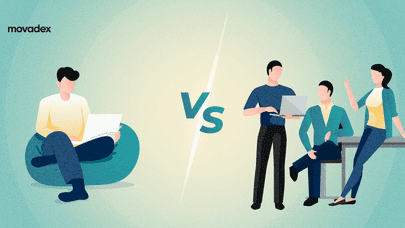Research is important, and there is no way you should skip it. In this article, I will tell you why you should conduct User Interviews, and how to do it just right, let’s go!
Why
Good question! Let’s begin with the basics. Why do any research at all? Well, first and foremost, it helps you better understand what you will be working with, and how to do it right. Design is something you can’t just pull out of your head and hope it to be successful right off the bat, because it just won’t be like that. You have to look through the competitors, use their apps and websites, look at what made them succeed. User Interviews, on the other hand, are different. You are reaching out to users, people who will (although, potentially) use your design. UX is all about users and their interaction with your creations, and its importance can’t be overlooked. In a nutshell, interviews give you a little insight into what people think about your product. They can point out what made them stay, or what made them uncomfortable and made them leave, or what thing they found very memorable. They may give you some advice on how to improve the product from their point of view, something that you may easily overlook.
When
The next important question is when. You may approach User Interviews in three ways:
Before the design.
It will help you to make your user personas, user flows and journey maps better, which in turn will make the overall design process and end result a lot more usable in the eyes of the user.
In the process of design.
If you encounter any setbacks in the process and you are not sure where to go next, an interview may save the day. But don’t rely on user thoughts alone, you are the pro here.
After the design.
It may be a part of your QA process, to ensure that everything will work towards the satisfaction of users’ needs.
Where
Now that we have the basics out of the way, it is time to get to more serious matters at hand: where do I conduct an interview? You may do it offline and online, of course. The most important thing here that must not be overlooked is the comfort of the interviewee. It’s basic psychology: when people are not comfortable, they are more likely to shy out, forget and speak less. That is why there is no universal answer to the where question, it is quite individual.
How
We’re getting there! So how do I do the interview, you may ask? Some basic aspects to consider:
Think of the end goal.
Your end goal is to learn something. What is it exactly? That is the right question to ask yourself when preparing, and it is a very important one to have an answer for. Make it specific, not broad.
Prepare questions beforehand.
They must not be closed questions that lead to a simple yes or no. Make them thought and dialogue provoking, and it will be easier for you to follow up with the next one.
Make your interviewees comfortable.
Explain why you are doing the interview, and how it will benefit the end product.
Most people feel very protective of their private data.
Make sure to explain how it will be processed and used.
Listen carefully and make notes.
Nobody likes to speak their heart out when a person in front of you seems not to care at all.
Let them speak.
Do not interrupt.
When you speak, make sure that you speak in a calm and rather slow manner.
It is important to make your interviewee feel even more comfortable.
Don’t try to fake your emotions. Be sincere and authentic.
Don’t show that you have taken any side, be it positive or negative.
You are here to learn about what side the person in front of you has taken, not yours. So, adjust your questions accordingly, creating them in an unbiased manner. With the basics out of the way, let’s get to the details. One of the most useful and important schemes you can use to prepare for the user interview is Erin Sanders' “research learning spiral”. It has five steps to it. The first three need to be done before the interview. Objectives. Think of the end goal. Your end goal is to learn something. What is it exactly? That is the right question to ask yourself when preparing, and it is a very important one to have an answer for. Make it specific, not broad. Hypotheses. What you believe you know about the end users already. You and your team should make assumptions at this stage, as they will be used later. Methods. This is when you decide how you will accomplish your end goal - filling the gaps in your knowledge. After you have finished those three steps, it is time to get to more practical matters at hand. Conduct. It is time to actually go through the interview process. Remember, your end goal is to gain new knowledge to use it afterwards. Use everything that you have prepared beforehand. But sometimes, something is not right, and you feel like you are stuck in the dead end. The two main reasons for this are: your design might not be the best fit for the projects, or the people that you have hired are not the people you were actually looking for. The best way to resolve this would be to change the interviewees, and if it doesn’t work, start reviewing your design with your team. Synthesis. You have successfully passed all the interviews, and now comes the really hard part: you have to review, process and systemize all the data that you have collected. Remember the hypotheses that you were supposed to think of earlier? Now, you have to either prove or disprove them. Also, keep looking for patterns, maybe some things were repeated over and over, and it is definitely not something you should miss and overlook. Fill in all the gaps that you had, and use all the data accordingly to make your project thrive! Important notice: don’t take everything that people say as 100% truth. It would be better to take everything that they say with a grain of salt, because people tend to bend the truth when they are stressed. New environment, new people, everything can make us say things that are not actually true. Remember, once again, that you are the professional here, and you have to decide what should be done at the end of the day.
What are the benefits?
Well, you will get a glimpse at how people perceive your product. Most importantly, you will know their expectations, what they want to see and how they will be approaching it. You will get information that will help you create user personas, which will bring a vision of the product’s concept, their needs, and their pain points. And the most important thing that you will learn is the behaviour of potential or existing users.
What are the downsides?
There is no guarantee that interviewees will actually use your product. In a way, by doing an interview, you make them interact with your design, it is not their choice. Another downside is a human factor. We may get nervous and forget to say something very important, something that would have actually benefited your research and design. Also, people just can’t know what exactly you are looking for, but it is something that can be corrected by asking the right questions.
Conclusion
User Interviews are a great way to research the end user, how they feel and perceive the niche and your product in general. If done right, it will surely benefit your design at every stage. Thank you for staying with us, Movadex team




